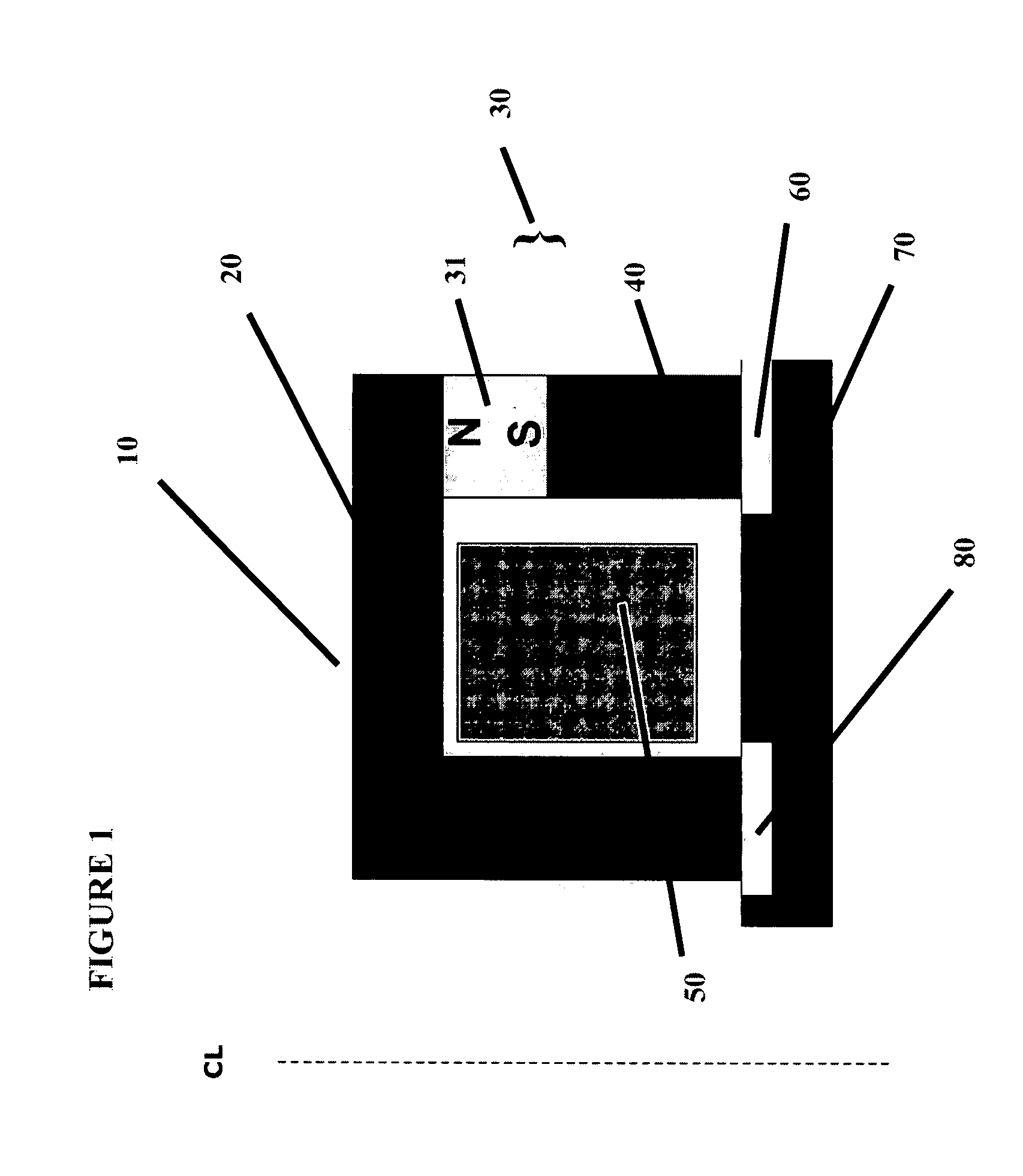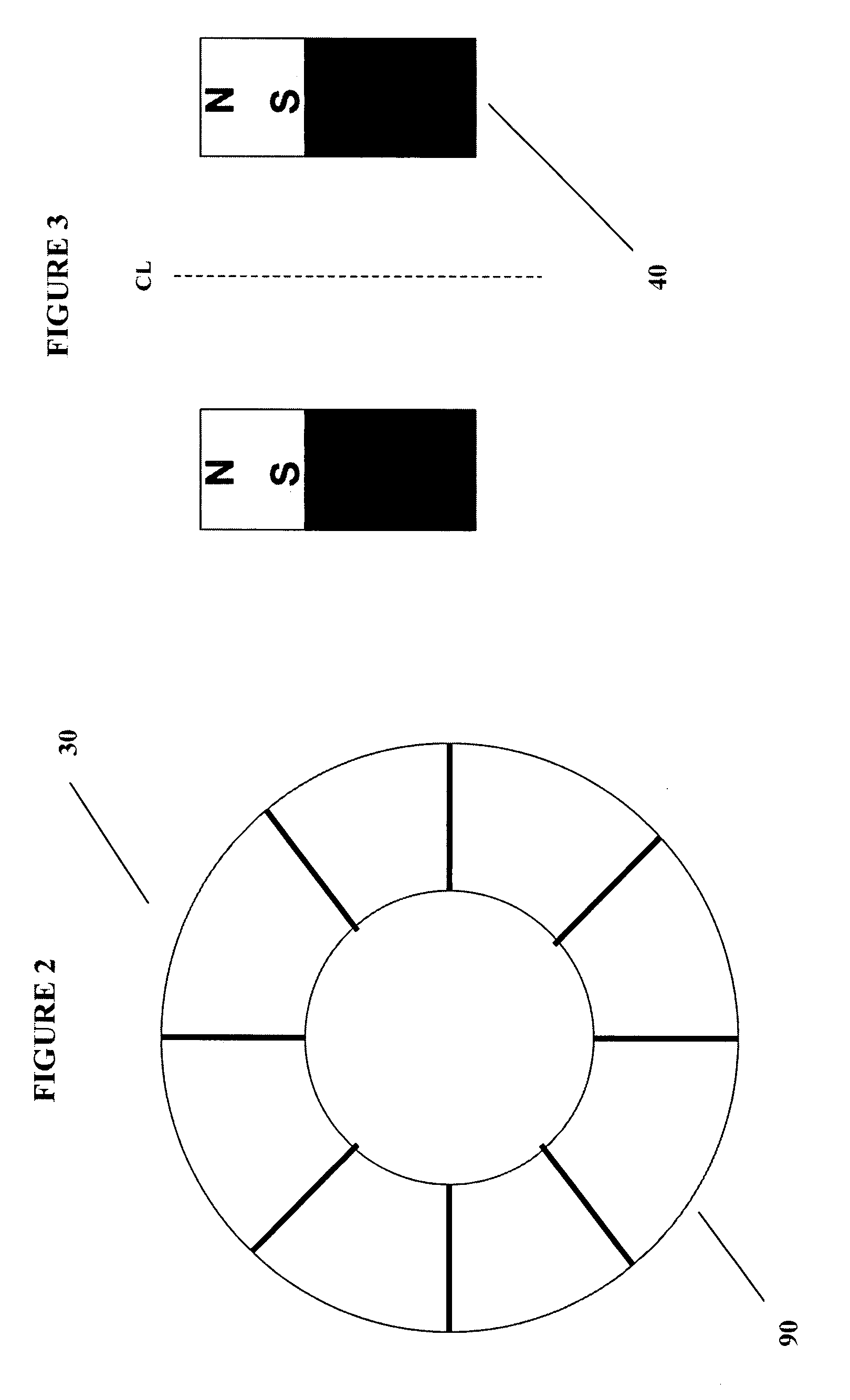Lift magnet mechanism for flywheel power storage systems
a technology of power storage system and magnet mechanism, which is applied in the direction of bearings, shafts and bearings, dynamo-electric machines, etc., can solve the problems of storage space, leakage and longevity, material restrictions and other factors inherent in the formation of magnetic arrays, etc., to relieve mechanical bearing wear, reduce storage space, and reduce power loss.
- Summary
- Abstract
- Description
- Claims
- Application Information
AI Technical Summary
Benefits of technology
Problems solved by technology
Method used
Image
Examples
Embodiment Construction
[0037]In flywheel driven power storage systems, the magnetic force generated either by permanent magnet or electromagnet or the combination of both is used to lift the rotor in a flywheel system. The magnetic force generated by a pair of stationary stator and rotor is normally highly sensitive to the air gap separating the stator and rotor. High sensitivity implies low magnetic force, as the gap is large and excessively high force as the gap is small.
[0038]In order illustrate the numerous embodiments of the instant invention, referring first to FIG. 1 illustrates a simplified cutaway assembly block diagram of the flywheel power storage system magnetic ring apparatus 10 or magnetic lift portion of the instant flywheel battery, illustrating the stator housing and assembly 20, the permanent magnet array 30 which is comprised of segmented magnet array 31 and the steel cylindrical member 40 or pole 40, the coil 50, the gap between rotor and stator, or rotor / stator gap 60, and the rotor 7...
PUM
 Login to View More
Login to View More Abstract
Description
Claims
Application Information
 Login to View More
Login to View More - R&D
- Intellectual Property
- Life Sciences
- Materials
- Tech Scout
- Unparalleled Data Quality
- Higher Quality Content
- 60% Fewer Hallucinations
Browse by: Latest US Patents, China's latest patents, Technical Efficacy Thesaurus, Application Domain, Technology Topic, Popular Technical Reports.
© 2025 PatSnap. All rights reserved.Legal|Privacy policy|Modern Slavery Act Transparency Statement|Sitemap|About US| Contact US: help@patsnap.com



